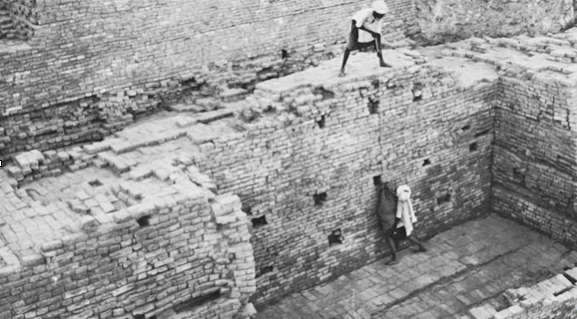Did our ancient ancestors have highly advanced technology rivaling the nuclear capabilities of today? There is evidence from ruins in India supporting that claim. There are also ancient myths, which describe scenes matching our modern understanding of atomic warfare.
Texts from thousands of years ago seem to contain what could be interpreted as accurate descriptions of nuclear explosions, comparable to the one in Nagasaki in World War II.
Take the great Sanskrit epic from India called the Mahabharata. It tells of doom and destruction, with passages that seem to accurately describe the effects and aftermath of a nuclear war.
Massive explosions “brighter than a thousand suns” were recorded, as well as corpses burned to the point that they were unrecognizable. There were also many other passages fitting the modern description of a nuclear attack.
According to this legend, those who survived the catastrophe lost their hair and fingernails afterward, while food supplies were contaminated—this all matches our understanding of the effects of radiation poisoning and radioactive contamination in the aftermath of an atomic explosion.
It stands as a possibility to some scientists (who are sometimes ridiculed) that civilizations could have existed far back in history, which were just as advanced (if not more advanced) than our civilization today. Some of those scientists have brought forward evidence to support this claim.
In the state of Rajasthan in northwestern India, a layer of highly radioactive ash was found near Jodhpur, which was enough to warrant an investigation. Later, the ancient ruins of Harappa to the north and Mohenjo-Daro to the west were unearthed in Pakistan, where evidence of a nuclear explosion dating back thousands of years ago was found.
Mohenjo-Daro was built around 2500 BC and was rediscovered in the 1920s. The site underwent significant excavations since then.
When the excavation reached street level, 44 skeletons were discovered scattered throughout the city, sprawled on the streets, suggesting that they had suffered a sudden and violent death.
Certain areas of the site also showed increased levels of radioactivity.
British-Indian researcher David Davenport found evidence of what appeared to be the blast epicenter: a 50-yard radius at the site, where all objects were found to have been fused and glassified—rocks had been melted by temperatures of around 1500 degrees C and turned into a glass-like substance.
In his book “Riddles of Ancient History,” A. Gorbovsky says that at least one skeleton discovered at the site contained more than 50 times the level of radiation that it should have had, and thousands of “black stones,” which were once clay vessels, were found fused together due to extreme heat.
Davenport also explained that what was discovered at Mohenjo-Daro mimics exactly the effects of the aftermath that took place in Hiroshima and Nagasaki during the 20th century.
Nevertheless, other scientists have rebutted these findings with evidence suggesting that the bodies found at Mohenjo-Daro were actually part of a mass grave of the sloppiest, most irreverent kind.
Some have noted that the simple mud-brick structures should have easily been destroyed by a nuclear blast, while some of those structures remained standing at a height of 15 feet.
Yet, there seems to be enough evidence for us to ponder: could there be more to our human history than we once thought? What could have caused this radioactivity? Could there have been humans thousands of years ago who had nuclear capabilities?
 Share on bsky
Share on bsky






Read 2 comments and reply